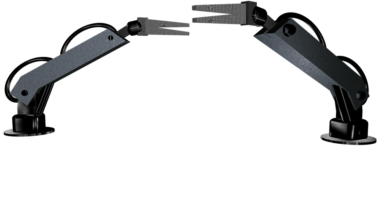
The Future of Work: Navigating the Shift Towards Remote and Automated Employment
In an era where technological advancements are exponentially accelerating, the concept of work as we know it is undergoing a profound transformation. The shift towards remote and automated employment, driven by new technologies, presents a paradigm shift with the potential to redefine the global workforce landscape. As we look towards the future, understanding the nuances of this shift is not just beneficial but necessary for businesses, workers, and society at large.
### The Emergence of Remote Work
The COVID-19 pandemic acted as a catalyst for remote work, demonstrating that many jobs could be performed effectively outside the traditional office setting. This shift has persisted and expanded, reducing geographical barriers and fostering a more flexible work environment. Tools like Zoom, Slack, and Asana have become staples, enabling seamless communication and productivity across time zones. However, with this flexibility comes challenges such as maintaining work-life balance and ensuring cybersecurity.
### Automation and Artificial Intelligence
Another significant trend reshaping the landscape of employment is the rise of automation and artificial intelligence (AI). Industries from manufacturing to services are witnessing a surge in the deployment of robots and AI systems designed to perform tasks ranging from the mundane to the complex. For example, in manufacturing, robots can work alongside humans to increase efficiency and reduce errors. In customer service, AI chatbots can handle a multitude of inquiries simultaneously, providing 24/7 support.
### Implications for the Workforce
The implications of these advancements are twofold. On the positive side, automation can liberate workers from repetitive and hazardous tasks, potentially leading to jobs that are more creative and fulfilling. Remote work offers flexibility, reducing commuting time and contributing to a better work-life balance.
Conversely, the widespread adoption of AI and automation raises concerns about job displacement. Historical shifts in technology suggest that while new types of jobs will be created, others may become obsolete, leading to a skills mismatch in the labor market. This highlights the urgent need for reskilling and upskilling initiatives to prepare the workforce for the jobs of tomorrow.
### The Advantage and Challenge of this Technological Shift
The transition towards a more remote and automated workforce holds several advantages, including increased productivity, cost savings for businesses, and a reduced environmental footprint due to less commuting. However, it also poses considerable challenges, such as the digital divide—the gap between those who have access to digital technologies and those who do not—and issues of social isolation and mental health among remote workers.
### Conclusion: Looking Ahead
As we navigate the future of work, it’s vital to balance the benefits of remote and automated employment with the challenges they present. Policymakers, businesses, and educational institutions must collaborate to ensure that workers are equipped with the necessary skills and support systems to thrive in this new environment. Moreover, as society adapts to these changes, it’s crucial to keep the human aspect of work in focus, valuing creativity, compassion, and community engagement. The shift towards remote and automated work is not only about technological advancement but also about shaping a future that enhances human well-being and economic prosperity for all.




